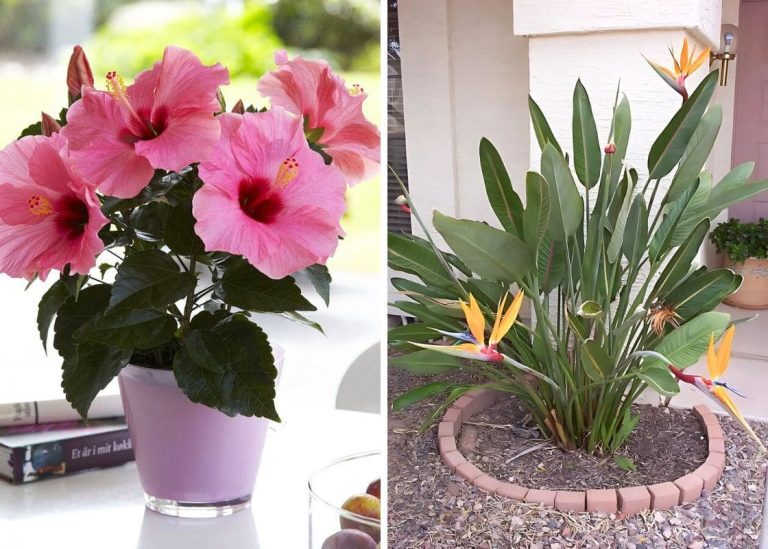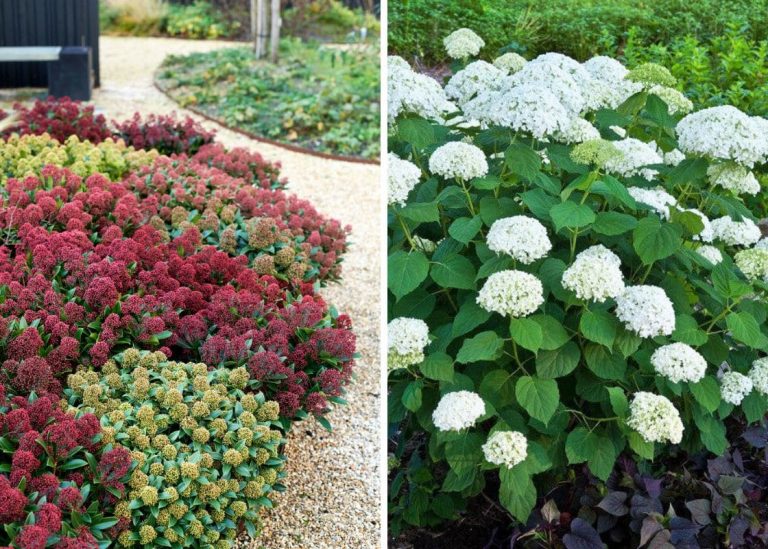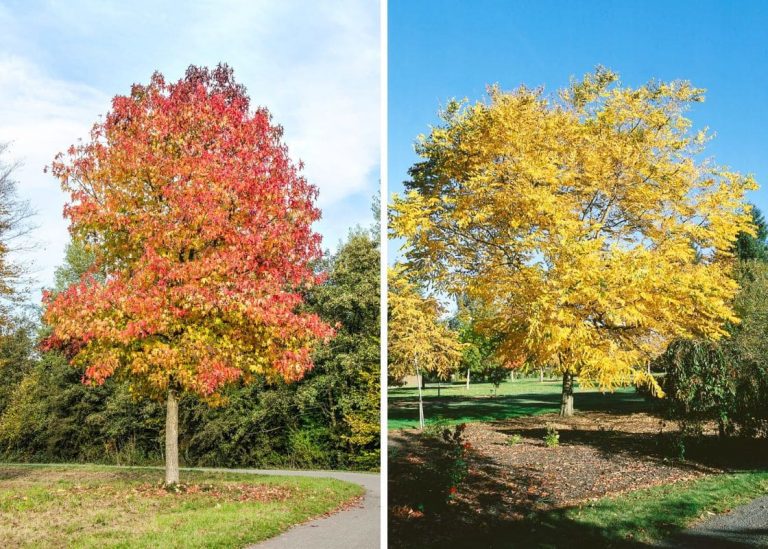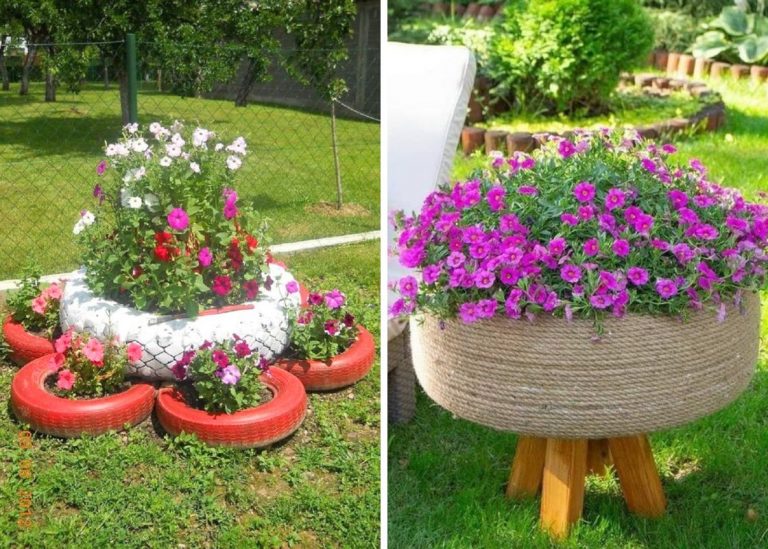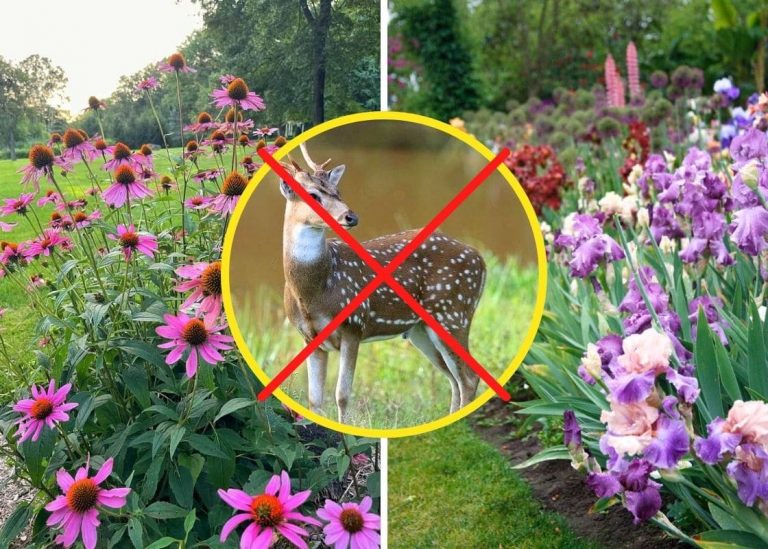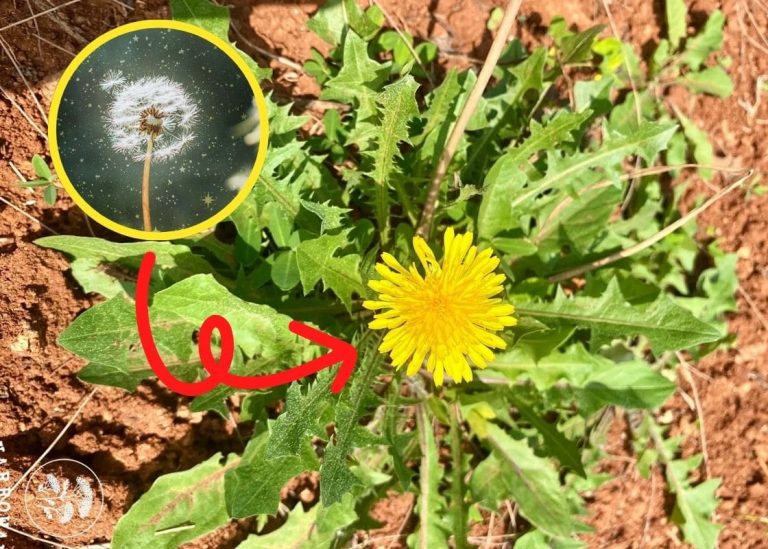The 20 Best Flowers to Transform Your Window Boxes into Stunning Displays
I love standing by the window, just to look at the way sunlight brushes the leaves in my old cedar window box. It’s a small thing, really—just a planter hanging outside the kitchen—but the joy it gives me is anything but small. The colors, the textures, the bees that wander in for a visit… they remind me that even the tiniest space can feel alive.
My grandmother used to tuck pansies into every windowsill of her apartment, even if it barely caught the sun. She’d say, “Flowers don’t care where they grow. They just want to be seen.” That stuck with me. So I started planting my own window boxes, not just to decorate, but to build little living paintings—each one a mix of joy, memory, and dirt-under-the-nails pride.
If you’re dreaming of giving your windows a glow-up with flowers that spill, bloom, and brighten from morning ‘til dusk, you’re in for a treat. These are my favorite picks—some are classics, some might surprise you, and each one has a personality all its own. Let’s wander through this blooming lineup together.
#1. Petunias
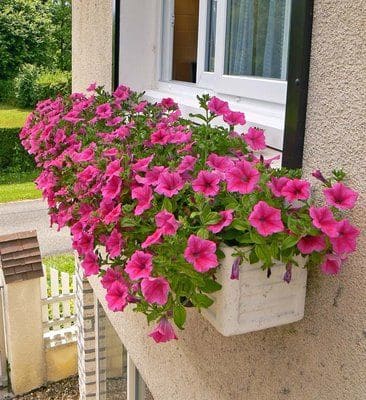
They’re like fireworks that never fizzle out. Petunias pour over the edges of a window box like a waterfall of color, each trumpet-shaped bloom nodding in the breeze. I always go for the magenta or deep purple varieties—they seem to hum with life in the afternoon sun.
Petunias thrive with a bit of sunshine and love a deep soak now and then. I usually plant them with something upright like verbena for contrast, and the combo never fails to turn heads from the sidewalk.
#2. Geraniums
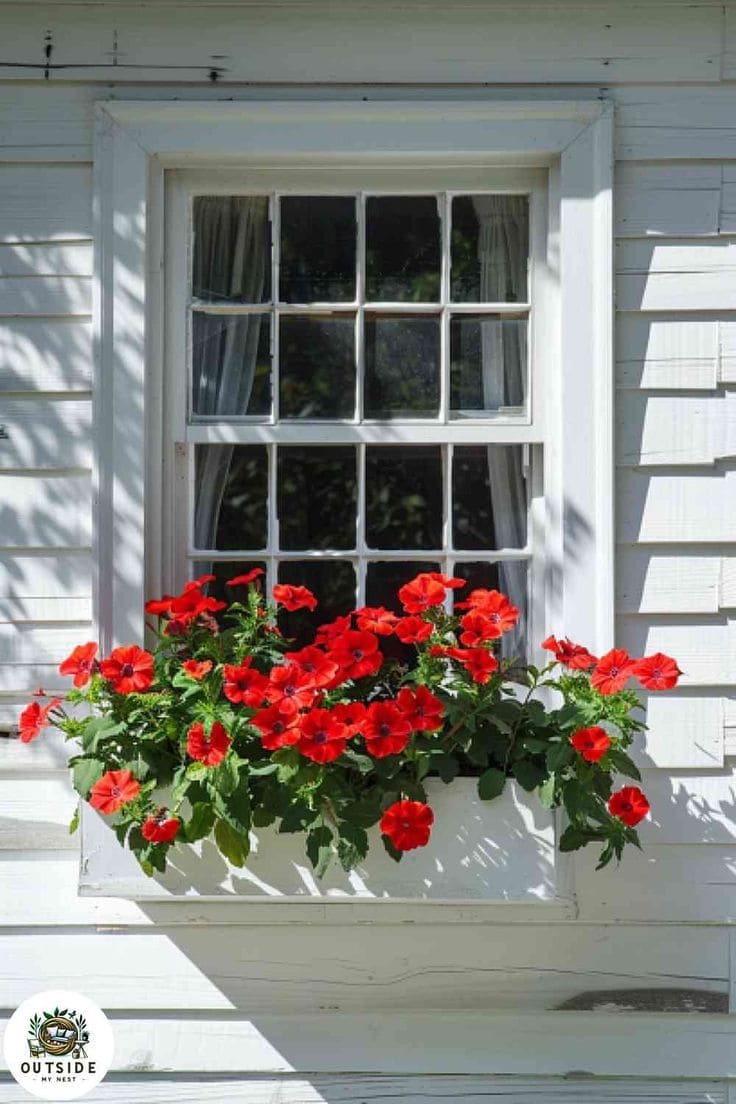
There’s a kind of old-world charm about geraniums. Their velvety leaves and dense, firework-like blooms remind me of the terra cotta balconies I saw on a trip to Florence. They’re reliable, bold, and thrive even when you forget to water them for a day or two.
I always tuck a few red geraniums near the center of my window boxes—they anchor the design and add a formal touch. Plus, bees adore them.
#3. Marigolds
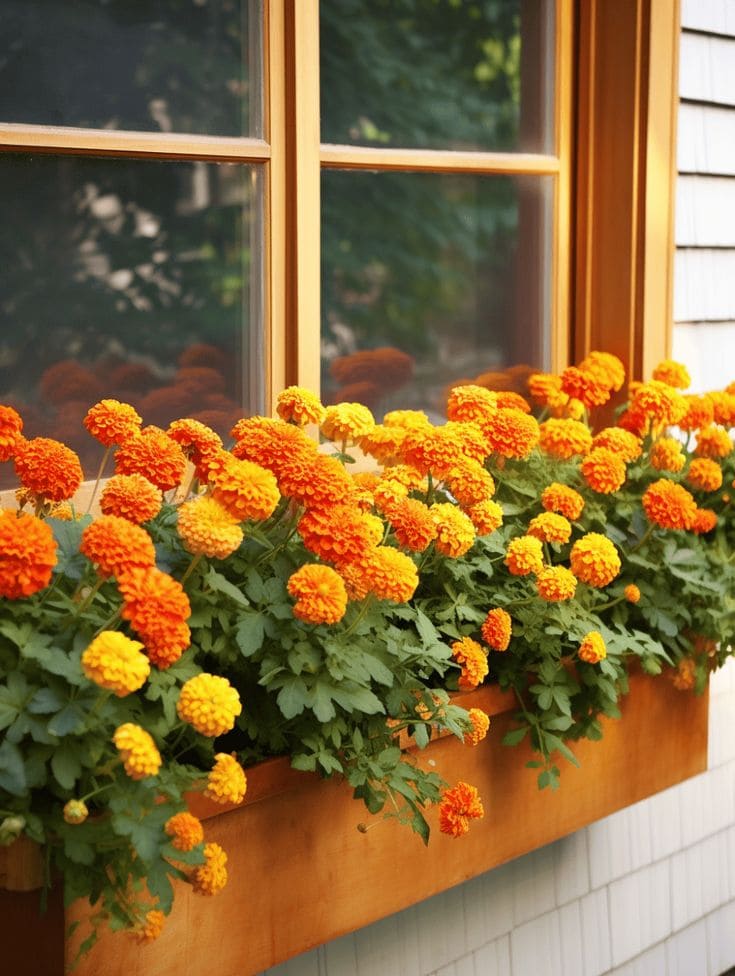
Marigolds are like sunshine you can hold in your hand. Their warm orange and yellow petals are more than just pretty—they repel unwanted bugs too. That’s a win for any window box near the kitchen or bedroom.
I plant them close together so they puff out like golden clouds. And if you clip off the old blooms, they’ll reward you with wave after wave of flowers.
#4. Begonias
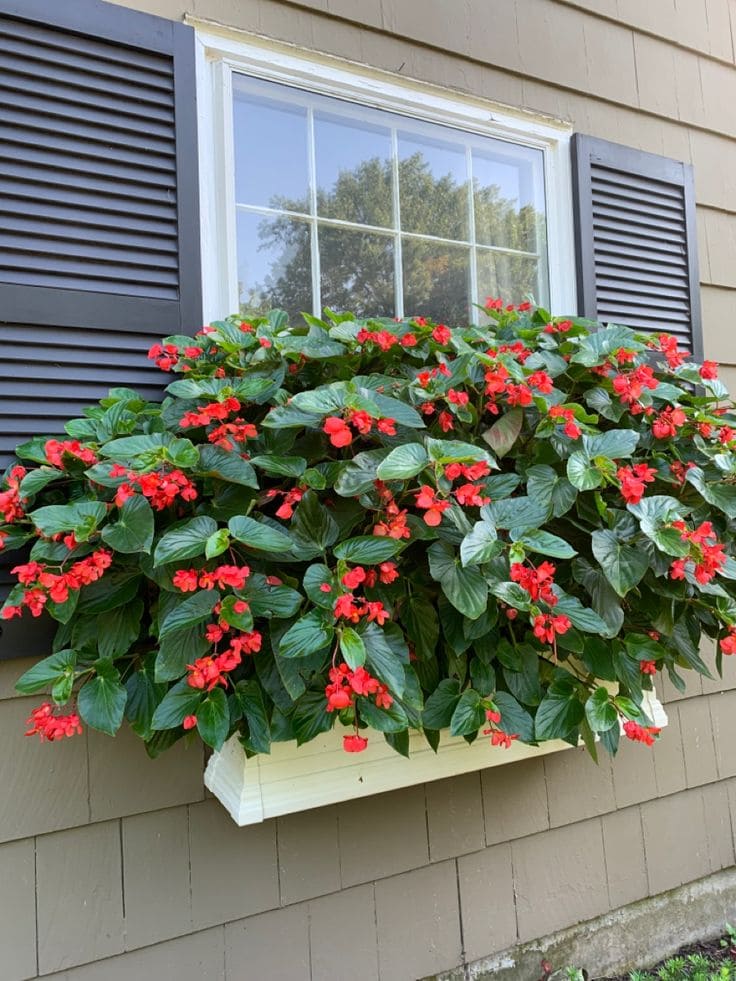
Marigolds are like sunshine you can hold in your hand. Their warm orange and yellow petals are more than just pretty—they repel unwanted bugs too. That’s a win for any window box near the kitchen or bedroom.
I plant them close together so they puff out like golden clouds. And if you clip off the old blooms, they’ll reward you with wave after wave of flowers.
#5. Impatiens
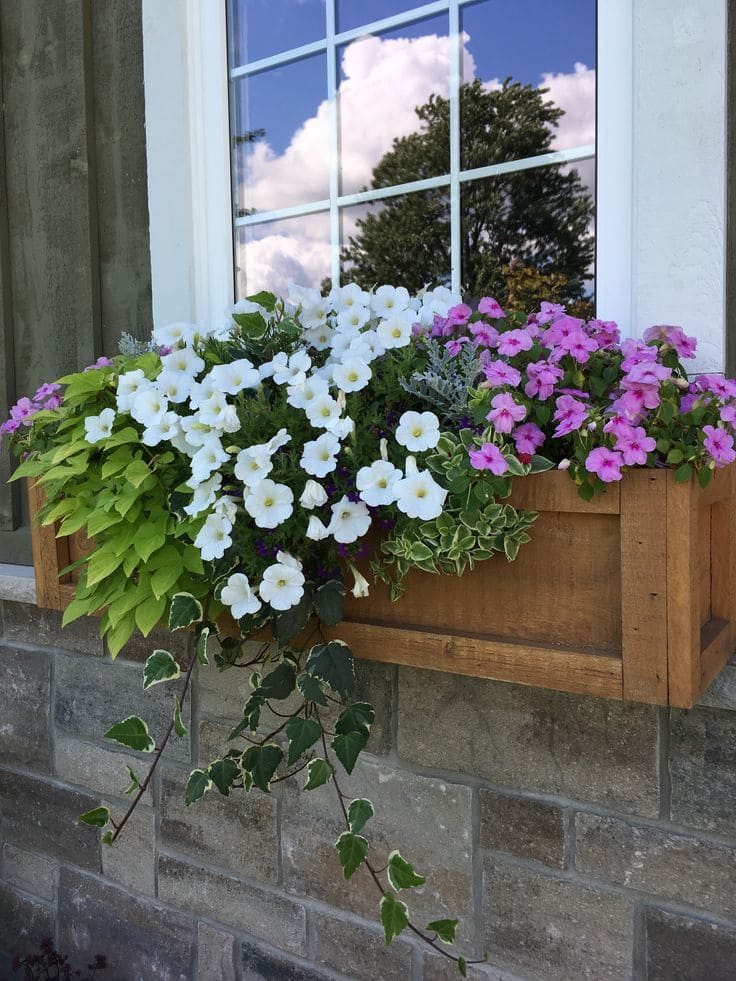
In that stubborn, always-shady spot near my side porch, impatiens are the only flowers that never let me down. They fill out like lush pillows, covered in bright petals from spring through fall.
I love mixing coral and white varieties for contrast. Keep their soil moist and they’ll never stop blooming, even when the summer sun fades.
#6. Lobelia
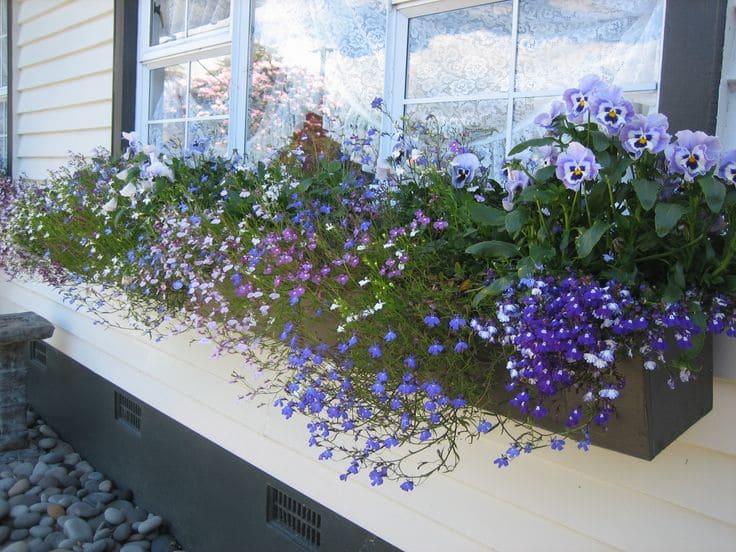
Lobelia is like a whisper of blue in a sea of green. Tiny, trailing, and delicate, it softens the edge of any planter. I use it when I want a dreamy, watercolor effect.
These dainty flowers prefer the cooler months, so I plant them early in spring or late in summer for a fall show. They pair beautifully with pansies and sweet alyssum.
#7. Sweet Alyssum
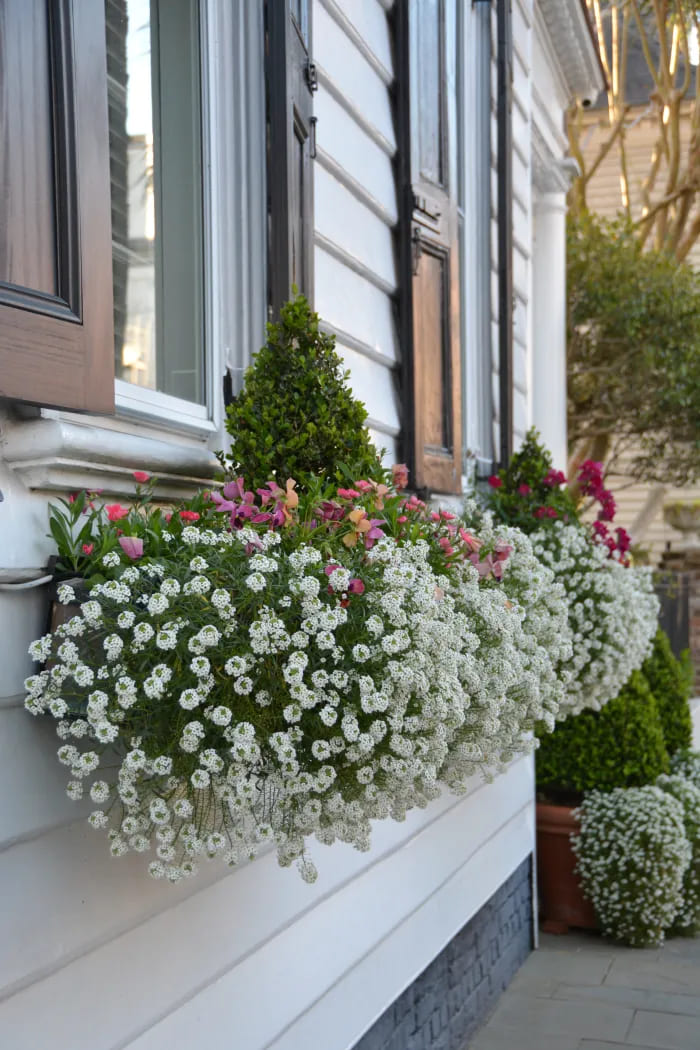
There’s something magical about walking past a window box that smells sweet and honeyed. That’s alyssum doing its quiet little thing. I tuck it in every empty space because it creeps, cascades, and connects the whole display.
The white ones are my go-to—they reflect the light and make bolder blooms stand out even more.
#8. Nasturtiums
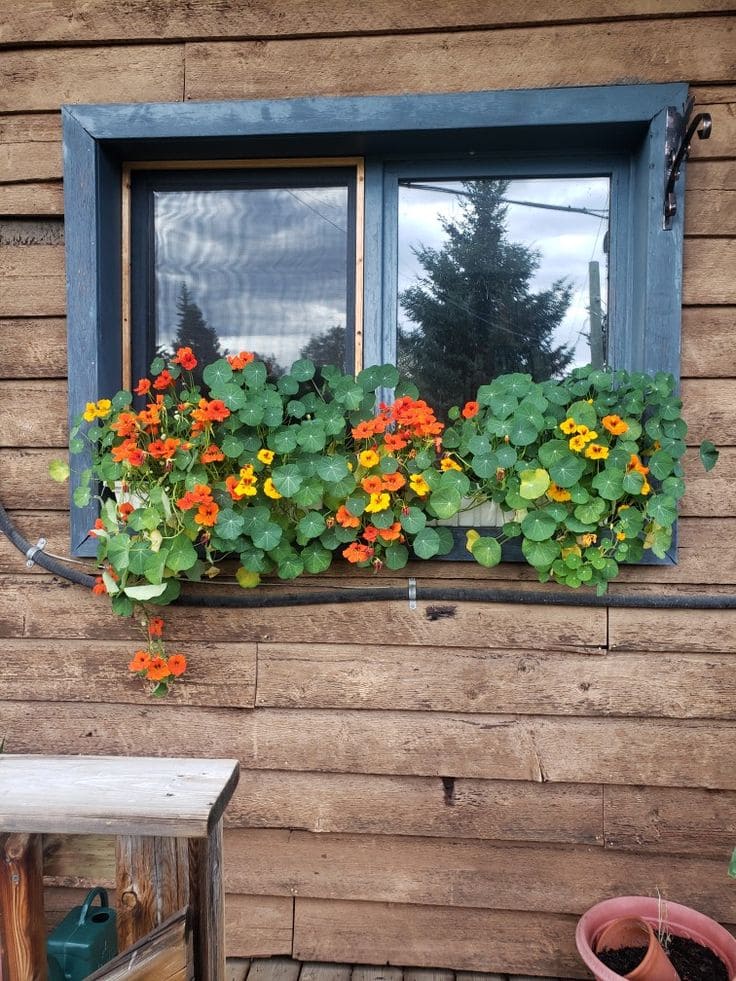
These are the rebels of my garden—untamed, edible, and endlessly cheerful. With round leaves like lily pads and blooms that range from fire-engine red to sunny yellow, nasturtiums bring drama in the best way.
They don’t mind poor soil or missed waterings, which makes them perfect for low-maintenance window boxes. I also clip a few blooms for salads—peppery and gorgeous.
#9. Pansies
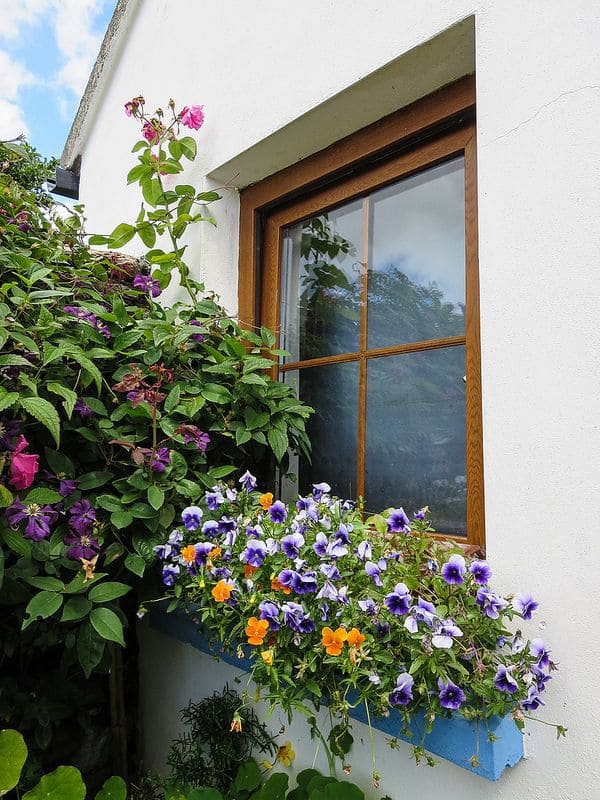
Even on cold mornings, pansies lift their faces to the light like little optimists. I once planted a box full of them for my neighbor’s birthday in early spring, and she cried when she saw them.
They come in every shade you can imagine and handle chilly temps like champs. Perfect for early-season displays or autumn refreshers.
#10. Calibrachoa

Million Bells is the right name—they bloom non-stop and in every color from lemon to lavender. They’re one of my secret weapons for high-drama trailing effects.
I love to let them drape down the sides of my planter boxes, mixing in a few upright herbs like rosemary for texture. Just don’t forget to water them—they dry out quickly but bounce back fast with care.
#11. Fuchsias
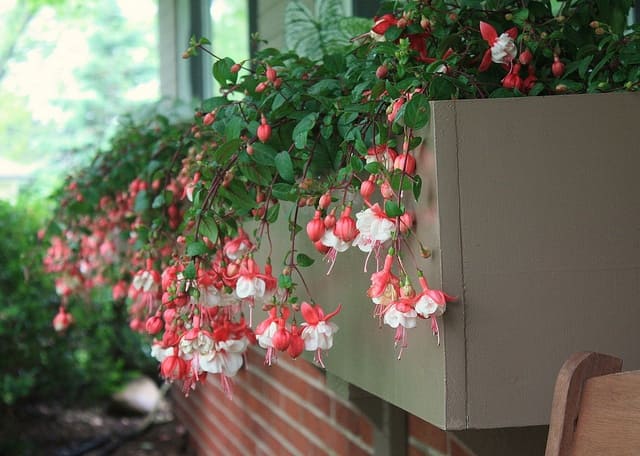
Like little lanterns, fuchsia blooms dangle and dance in the breeze. My aunt swears they bring good luck if you place them near a front door, and I’ve kept one there ever since.
They prefer cool, shaded areas and love a morning misting. Their pink and purple combo is pure magic against dark green leaves.
#12. Ivy Geraniums
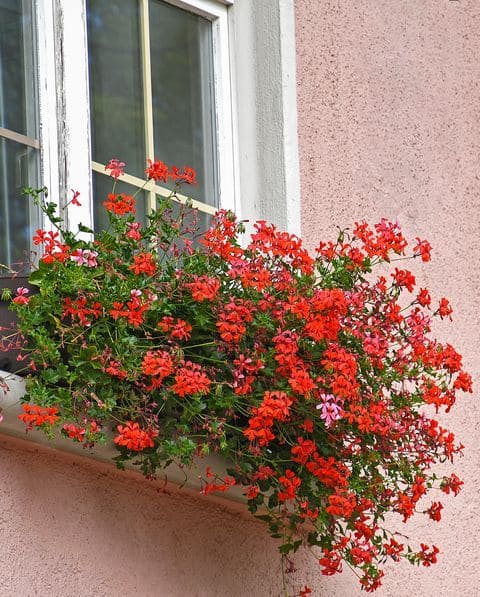
These are the showstoppers—long, trailing stems of flowers that cascade like silk ribbons. They’re perfect for balconies that catch a lot of sun and wind.
What I appreciate most is how they look effortlessly full without needing daily attention. They fill out quickly and love to soak up the light.
#13. Dianthus
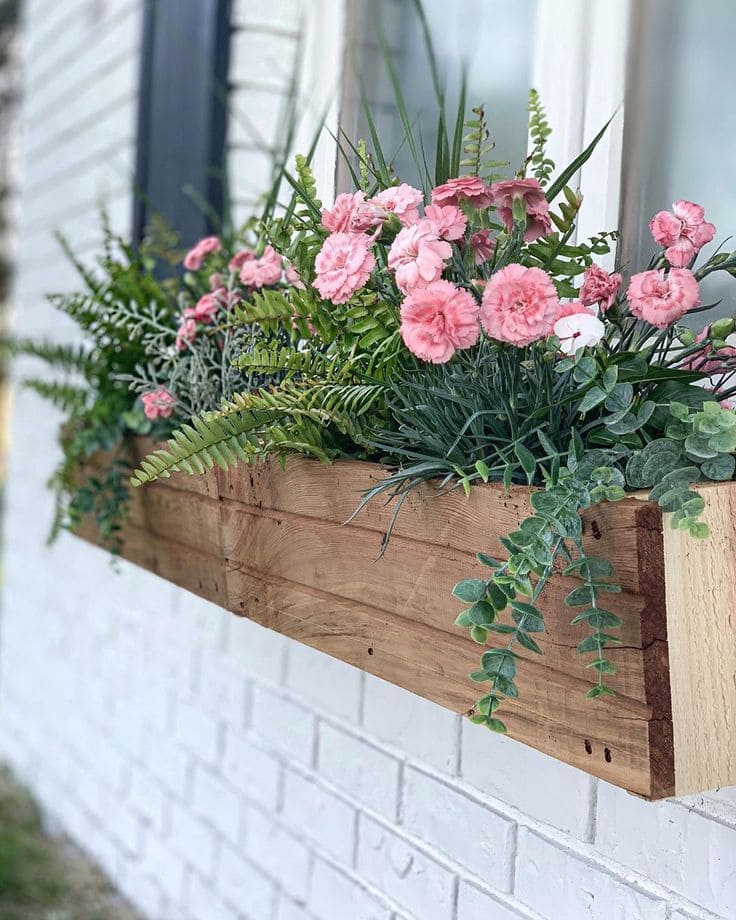
Dianthus offers neat, fringed flowers that look like they’ve been trimmed with pinking shears. The scent is clove-like and nostalgic.
I plant them where I can lean out and catch their scent on breezy afternoons. They’re tidy, low-growing, and bring a touch of elegance without being fussy.
#14. Verbena
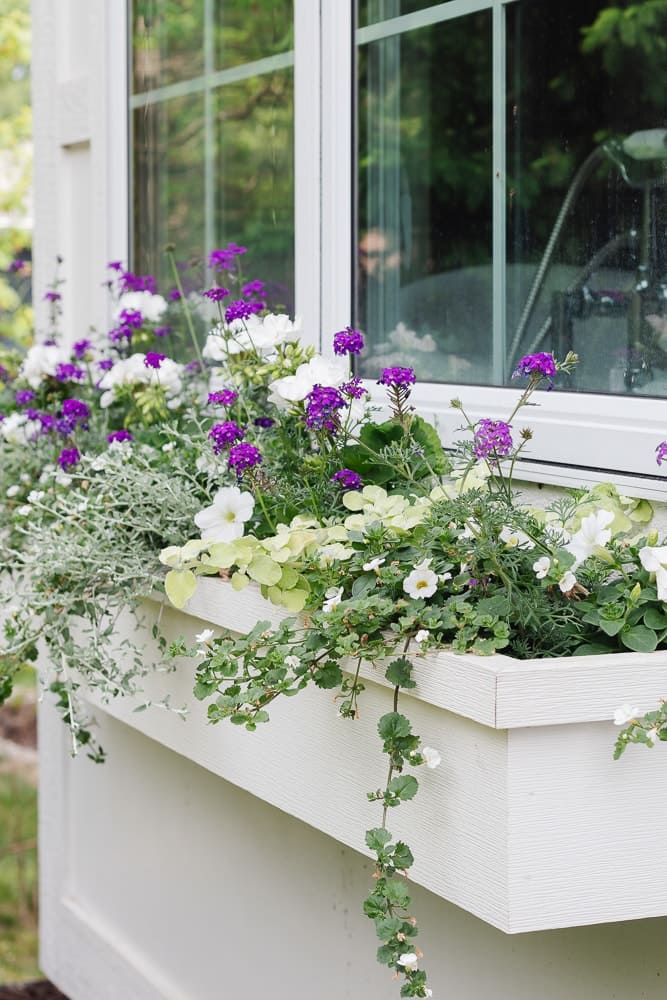
Verbena is like a confetti explosion in plant form. It draws pollinators in droves and blooms for months on end.
Mix it with petunias for a vibrant, overflowing box that keeps the garden buzzing. A light trim mid-season keeps the flowers coming strong.
#15. Bacopa
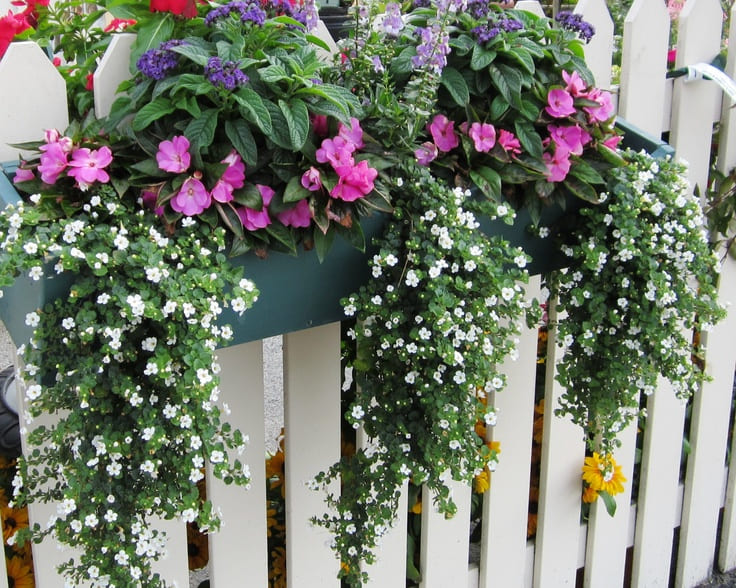
Sometimes I need a quiet plant that won’t compete with showier blooms. Bacopa is that quiet star—delicate, trailing, and endlessly flowering.
White or lavender varieties pair well with brighter blooms and soften sharp edges. A well-hydrated bacopa will reward you with gentle, full drapes.
#16. Cosmos
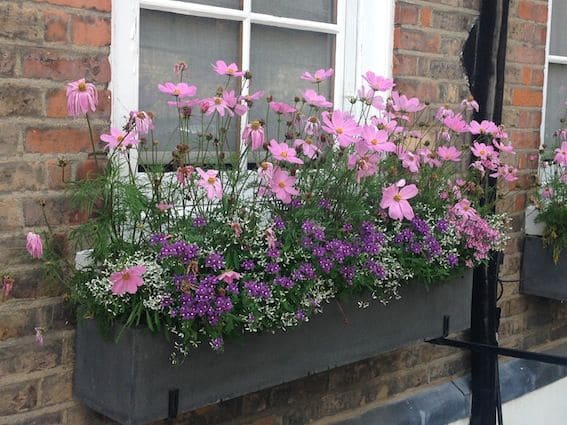
Tall and whimsical, cosmos wave above the rest like dancers in the wind. I use them to add height and movement.
They love sun and neglect, so they’re ideal for a forgetful gardener or a second-story box. The soft pink and burgundy ones are my favorite.
#17. Salvia
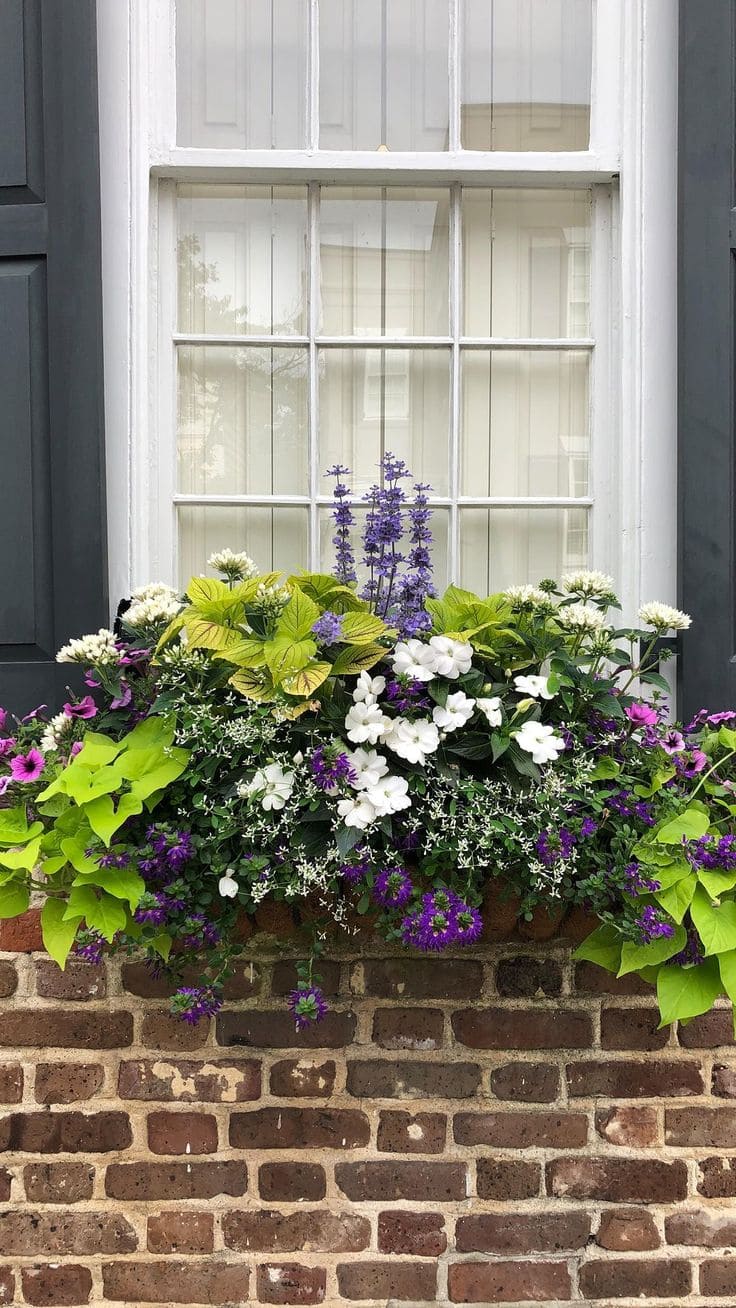
Spiky and proud, salvia is a magnet for hummingbirds. I like to mix it in the back row for vertical contrast.
Its bold purples and reds balance trailing blooms beautifully. Plus, it’s tough and blooms all summer long.
#18. Zinnias
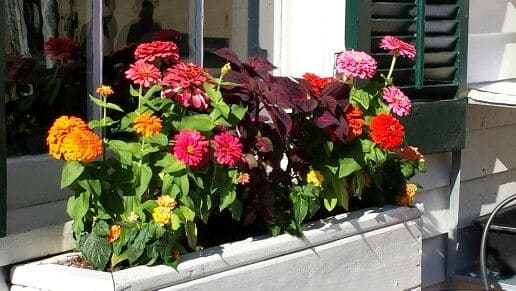
Bright, playful, and full of personality, zinnias are like party guests in flower form. I often start mine from seed—it’s surprisingly easy, and watching them grow is pure joy.
They last long in the box and even longer in a vase, which makes them perfect for cutting and sharing with neighbors.
#19. Creeping Jenny
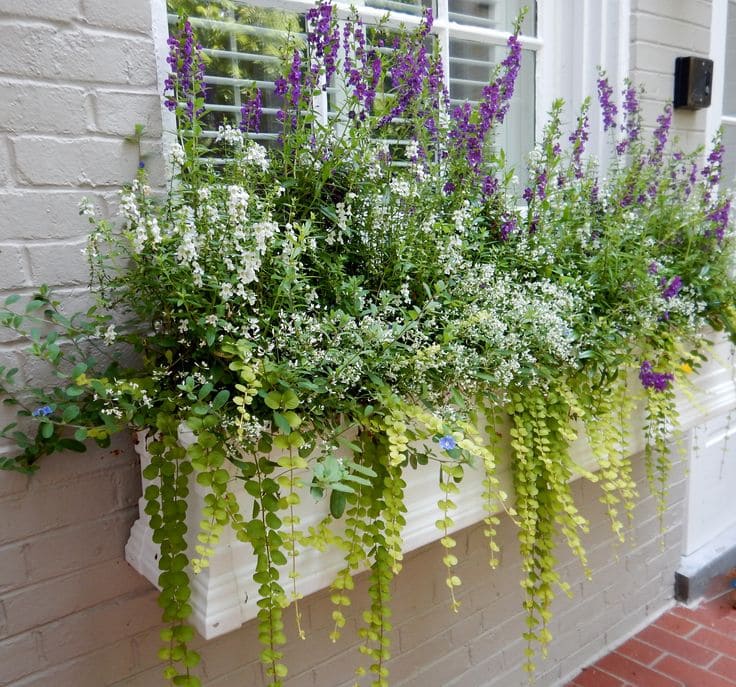
This little vine is my favorite secret weapon for drama. Its lime-green leaves tumble over the edge of boxes like spilled treasure.
I love pairing it with deep purple flowers like lobelia or verbena—the contrast is stunning, and it brings the whole arrangement to life.
#20. Snapdragon
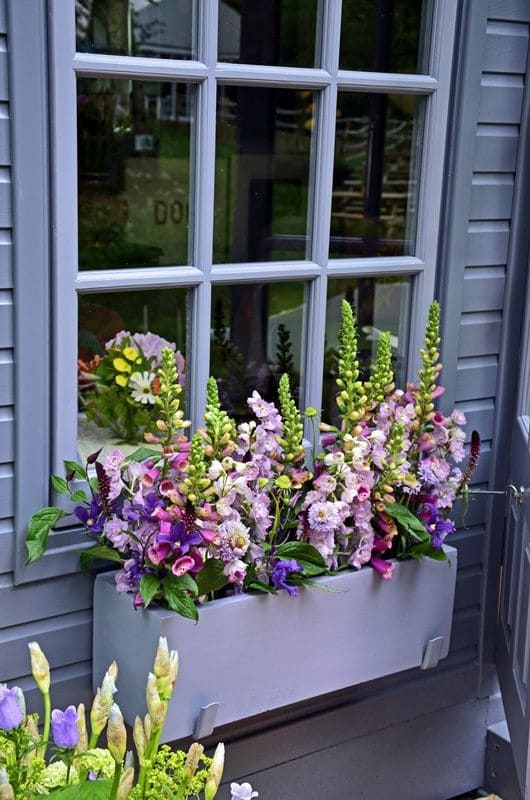
Snapdragons are playful, stately, and utterly charming. My kids used to pinch their blooms and pretend they were talking.
They bloom best in spring and fall and offer a great vertical element. Try mixing them with trailing blooms for a full and lively display.
Final Thoughts
Crafting a window box is more than a splash of color—it’s a miniature garden that greets the sun, greets the mailman, and greets you every time you pass by. Each flower you choose brings its own spirit to the scene, and somehow, they all work together in the most surprising ways.
I hope this list has sparked a few ideas or maybe even planted the seed for your next project. Try one or try them all—experiment, mix, and let your creativity bloom. And when the first bee shows up for a visit, or you catch your reflection smiling in the window, you’ll know the magic has taken root.

